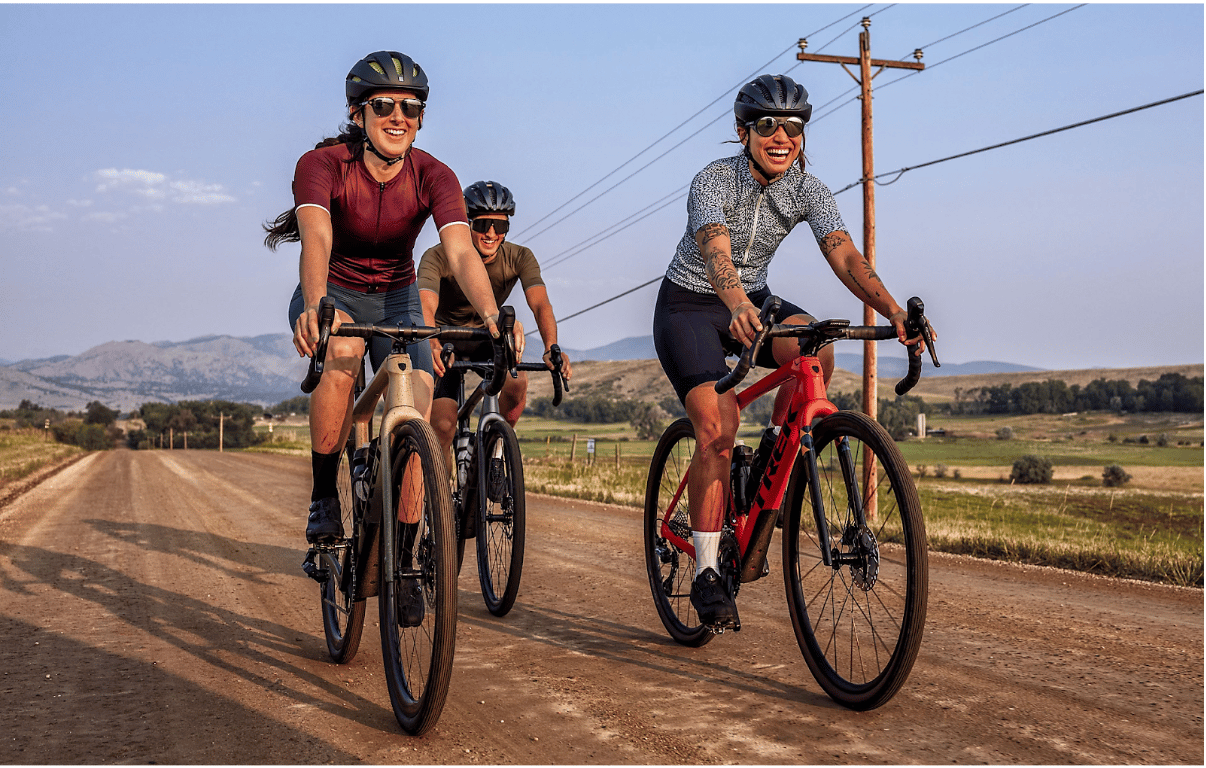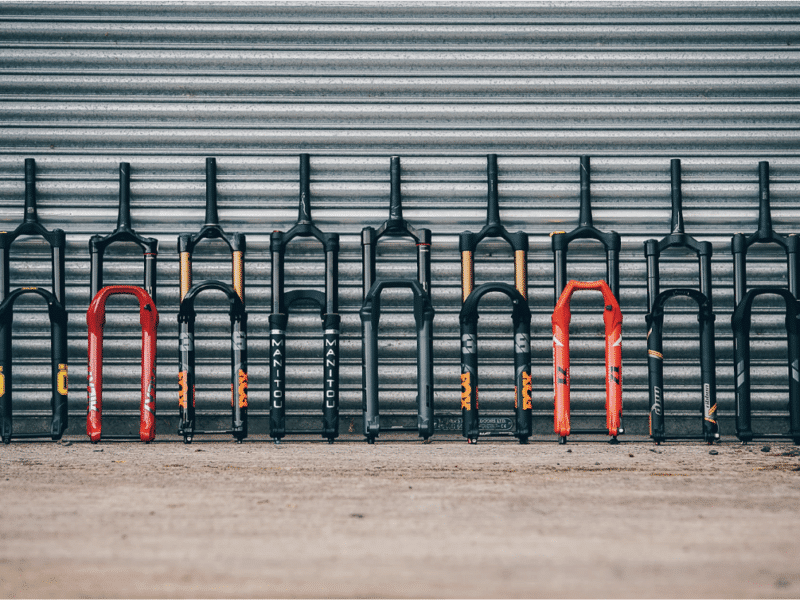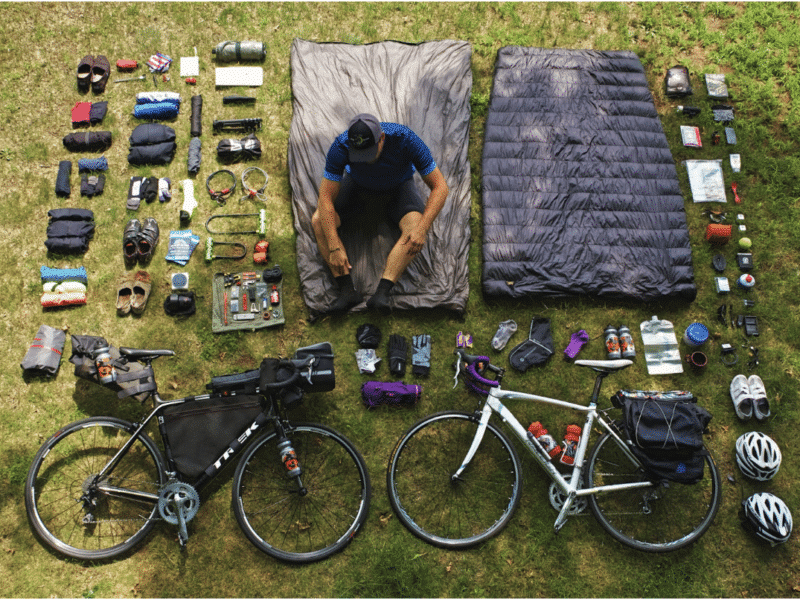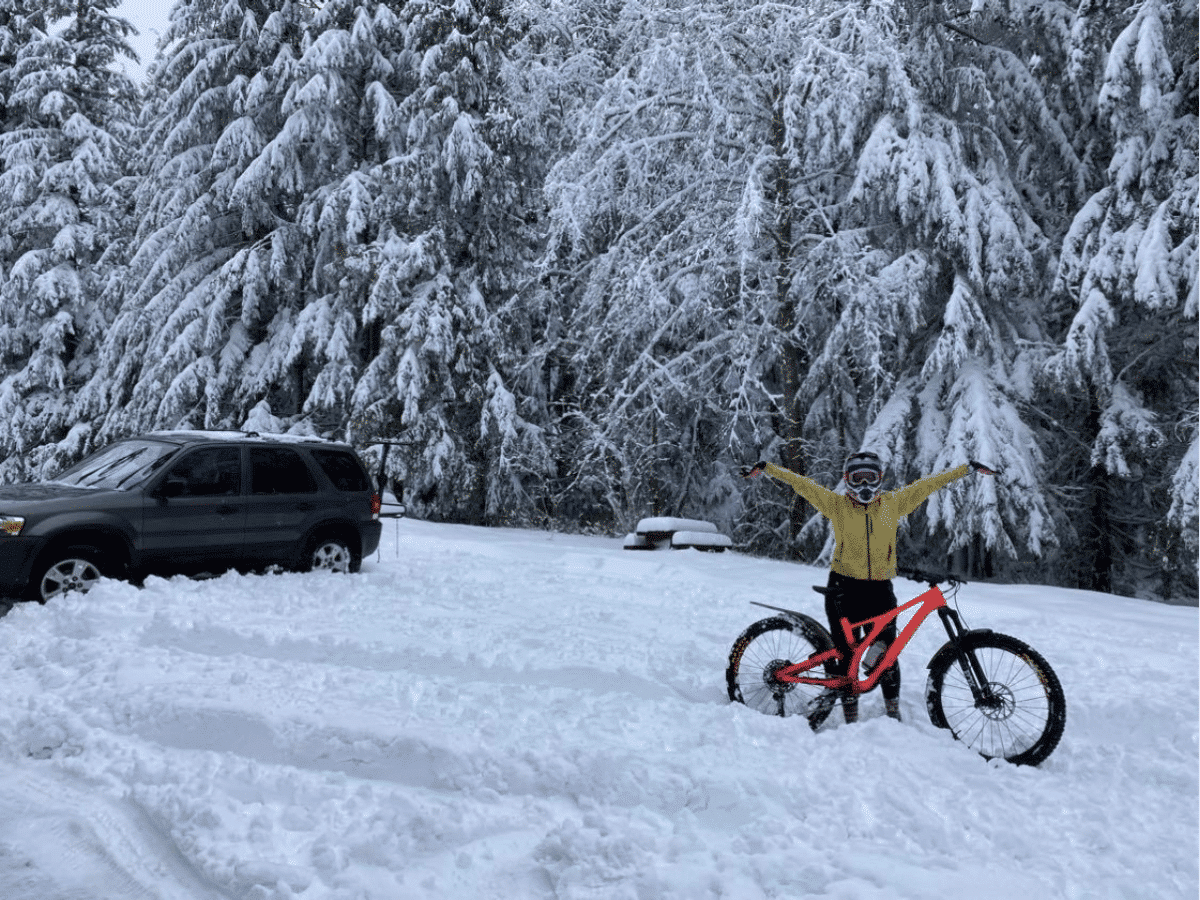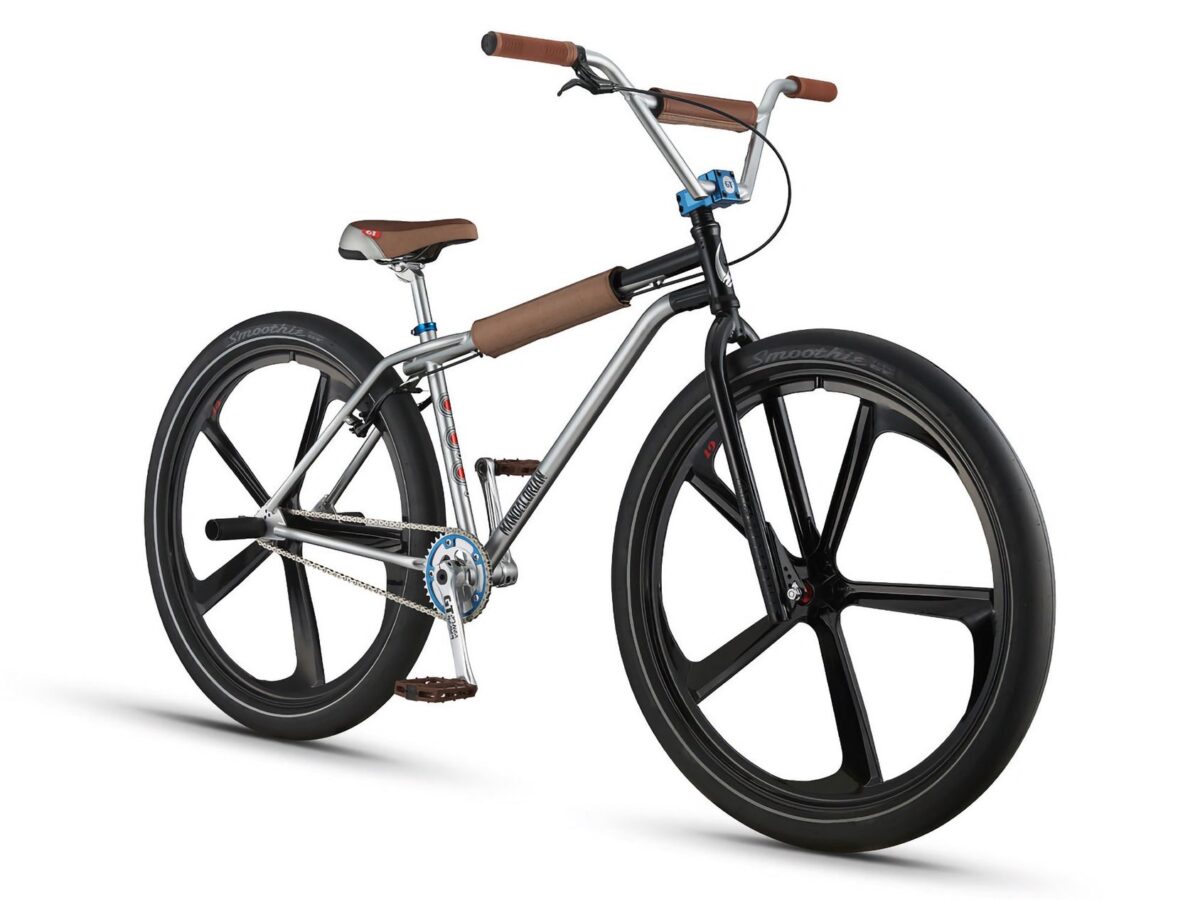If you are new to the mountain biking or riding world then you may have heard the name “gravel bike” being thrown around here and there but don’t know what it is. Well as you could probably have figured out just from hearing the name, a gravel bike is a bike that has been designed not to ride on as rough terrains as you would with a mountain bike but rather on smoother gravel trails, doubletracks or forest service roads.
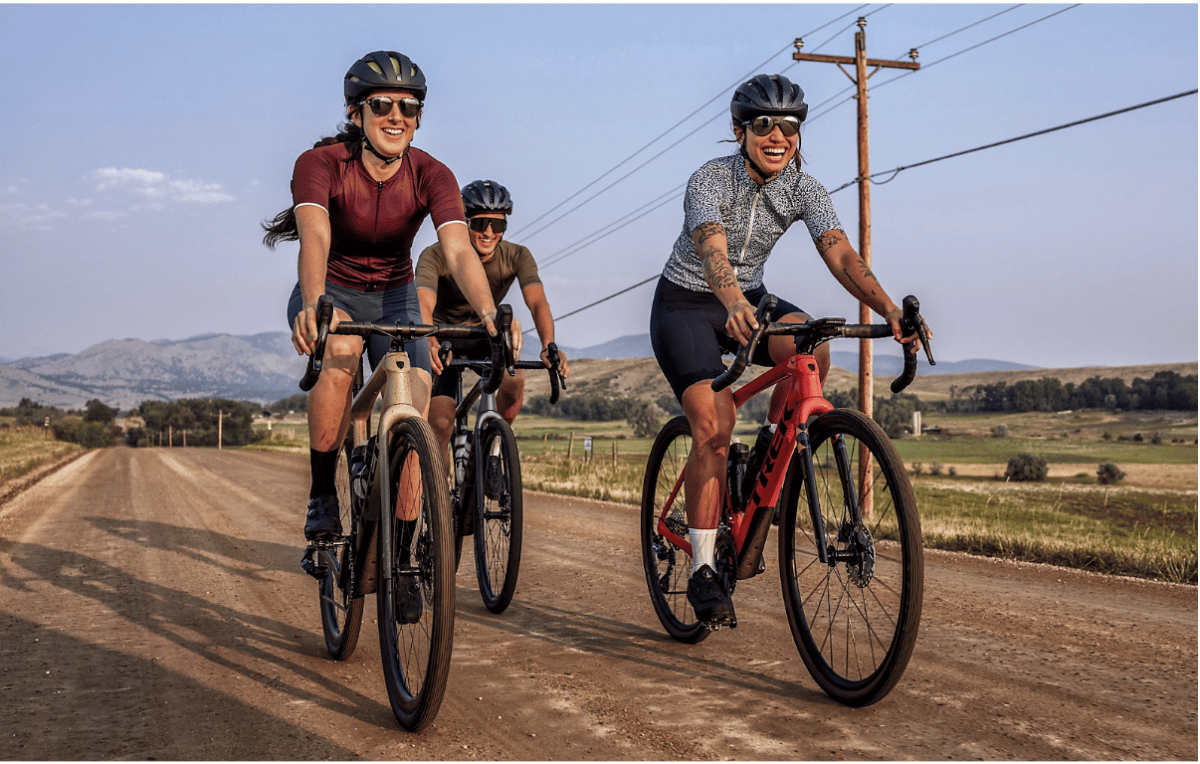
In the past there have been many road riders that have taken their road specific bikes onto light off road trails, and now with this new category of bikes it makes just this a lot more enjoyable and comfortable.
When you are looking to purchase a new gravel bike then it is important to check for these 4 things: a frame clearance capable of accommodating up to 700c x 45mm tires, three or more mounting locations for water bottles/food, a long wheelbase for added stability at higher speeds and lastly disc brakes so that you are able to take on the longer and steeper descents with more confidence.
So, in essence, gravel bikes are more capable than the road bike and will be able to continue on roads where road bikes would be forced to turn around, but with gravel bikes you’ll still be able to easily commute with them everyday to work and back just like with a road bike.
Types of Frames: Aluminium or Carbon
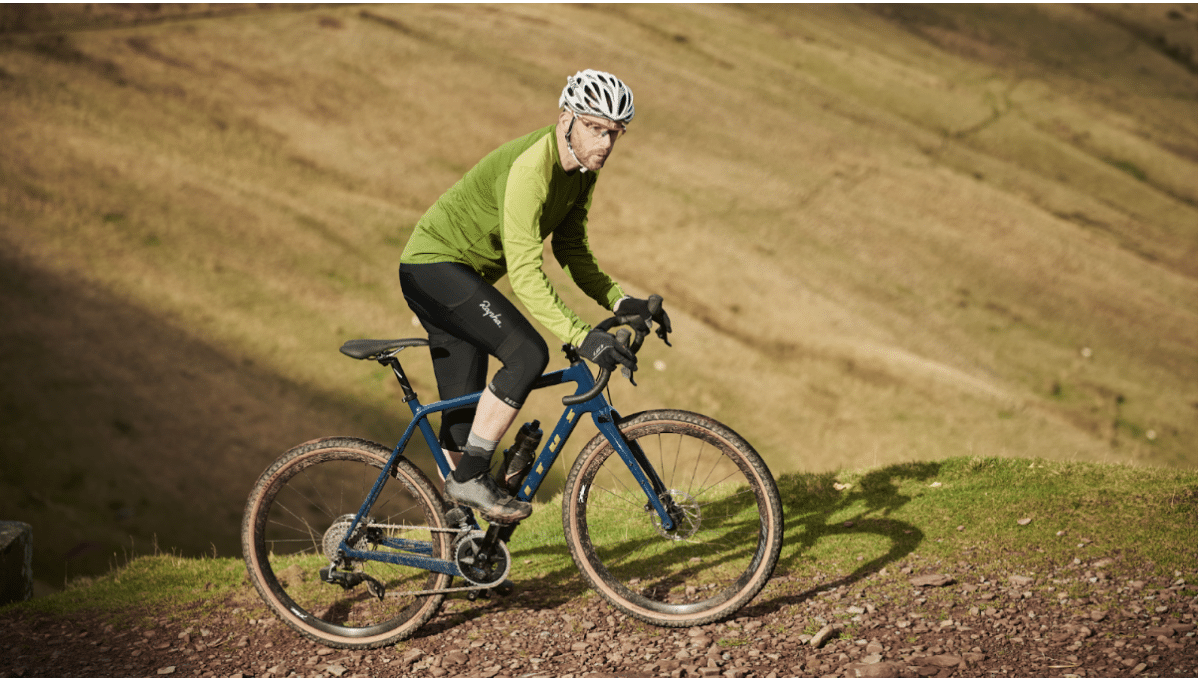
Aluminium and carbon are by far the two most popular materials that are seen in gravel bike frames but there are also rare instances where you can come across frames made of steel, like in the Surly Straggler and Co-Op Cycles ADV 1.1, or titanium, like in the Moots Routt YBB.
Out of all the gravel bike frame materials carbon is easily the lightest of all of them and is as a result the clear option for riders who are trying to shave as much weight off of their bike builds in order to reach maximum speeds. Compared to the other materials listed above, the carbon frame bikes are made with molds and aren’t welded, which means that companies are able to tune the characteristics and feel of the ride of the bike, like making it more compliant for added comfort or stiffer for better pedalling efficiency and power transfer with each pedal. The Salsa Warbird is specifically known for changing a lot over the past years for the company to try and find the perfect balance of all these characteristics.
However, as with all carbon bikes in any discipline they are very expensive, and you’ll be able to save hundreds of dollars if you choose to purchase an aluminium frame model instead that has been similarly equipped.
The biggest advantage when you opt for an aluminium frame is that they are a lot more durable than the carbon frames, and even the less common materials, like steel and titanium, will be able to last you many years of riding. So, if you are just a casual gravel cyclist or commuter then the best material you should go for would be aluminium, because you’ll be able to get the best value for money with these bikes.
Drivetrain and Gears
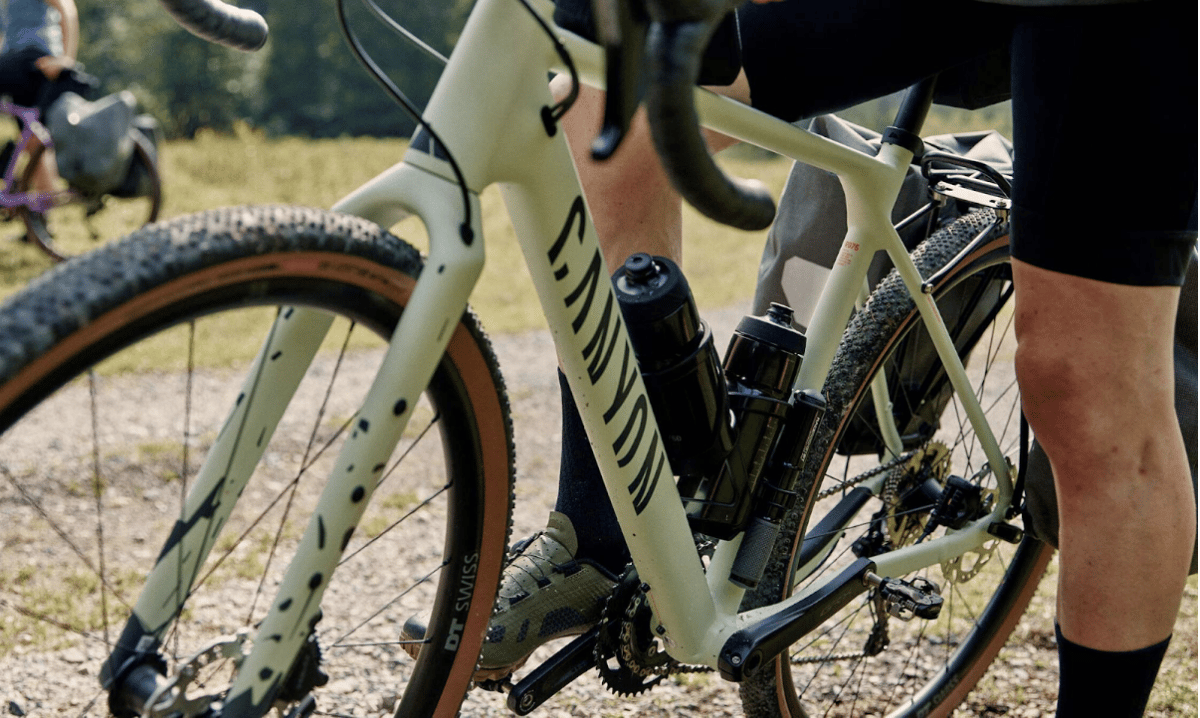
Within the gravel biking world there are two different options that are the most popular when it comes to drivetrains, the first one being a 1x, which only has one front chainring and fewer gears, and the second one being the 2x, which instead has two chainrings in the front and more gears to cycle through.
The reason that the 1x drivetrains are so popular is because they are very easy to use and since there are less gears they generally tend to weigh less than other options out there. These 1x drivetrains are often recommended more for the fitter riders out there and gravel riders who don’t find themselves riding on steep climbs or descents.
Then on the other hand if you are going to be offroading your gravel bike on mountainous terrain then the 2x setup is definitely the one you should be checking out. If you are picking the 1x setup over the 2x in because you think the lighter weight will make pedalling uphill easier then you haven’t looked at the full picture yet, the 2x systems normally offer rider a much easier gear to get uphill and then a harder gear for the flat sections as well so you’ll be able to get up hill easier and be able to hold some high momentum on the flat sections too.
There’s always the option out there of modding a 1x system so that it has a larger-range cassette, giving you more gears to plough through, but modding always comes with risks and most people would recommend sticking with original components for the convenience.
Different Wheel Sizes
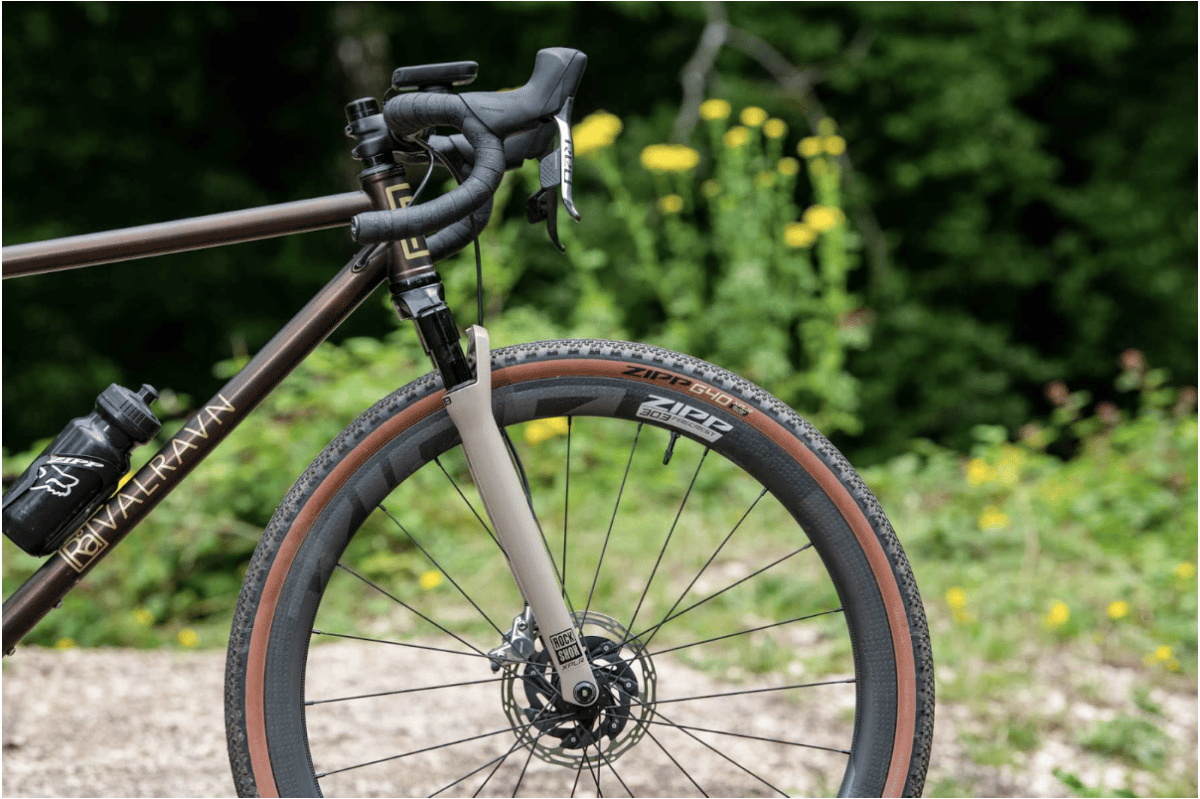
700c
The 700c wheel size is the one that will give riders the best performance overall, if you’re looking to be riding on quite a mixed terrain, and this is why it is the most common size option out of the gravel bikes. The 700c sized tires and wheels on these gravel bikes provide such a great overall experience since they normally weigh less and are able to roll faster on most gravel paths, partly thanks to the fact that they are narrower than the 650b options on the market right now.
Since these sized wheels and tires are so popular brands have focused development of these more than that of the 650b’s, which means that when you are looking for a replacement set of tires, or if you just want to spice things up and get a different tread pattern, then you’ll quickly find that there are a lot more options to choose from in the 700c wheel size. So, if you are a rider that won’t really find themselves out on very rough gravel a lot of the time then the 700c size wheels and tires are definitely the best option for you, because of its great overall performance.
650b
Then moving onto the other option in sizing that you can get for these bikes is the 650b, which is a size that is recommended for riders who will be spending most of their time on the rougher gravel as comfort is what makes this size better than the 700c.
This added comfort that the 650b has is from the ability that they have to be able to absorb and float over obstacles very smoothly, thanks to the larger footprint and lower air pressure that you have with this system. Sadly, the downside that you get from having a larger footprint is that you will get a lot of added weight with these systems and you’ll also find that you roll slower than if you were to be running the 700c system instead.
However, another great advantage and upside that you get from having more surface area on the ground, is that you will have more traction, which is definitely very helpful if you do go offroading somewhere where the surface or terrain that you’re riding on, is a little looser.
The popularity of the 650b size is definitely on the rise since gravel riding is slowly but surely venturing into the rougher terrain, where you’ll need the larger 650b tires and wheels. So, in the end if you are a rider who will just be using their gravel bike to do some commuting on paved roads, and maybe some light off roading now and again, then the 700c size wheels may be a better fit for you.
Should i run Hydraulic or Mechanical Disc Brakes
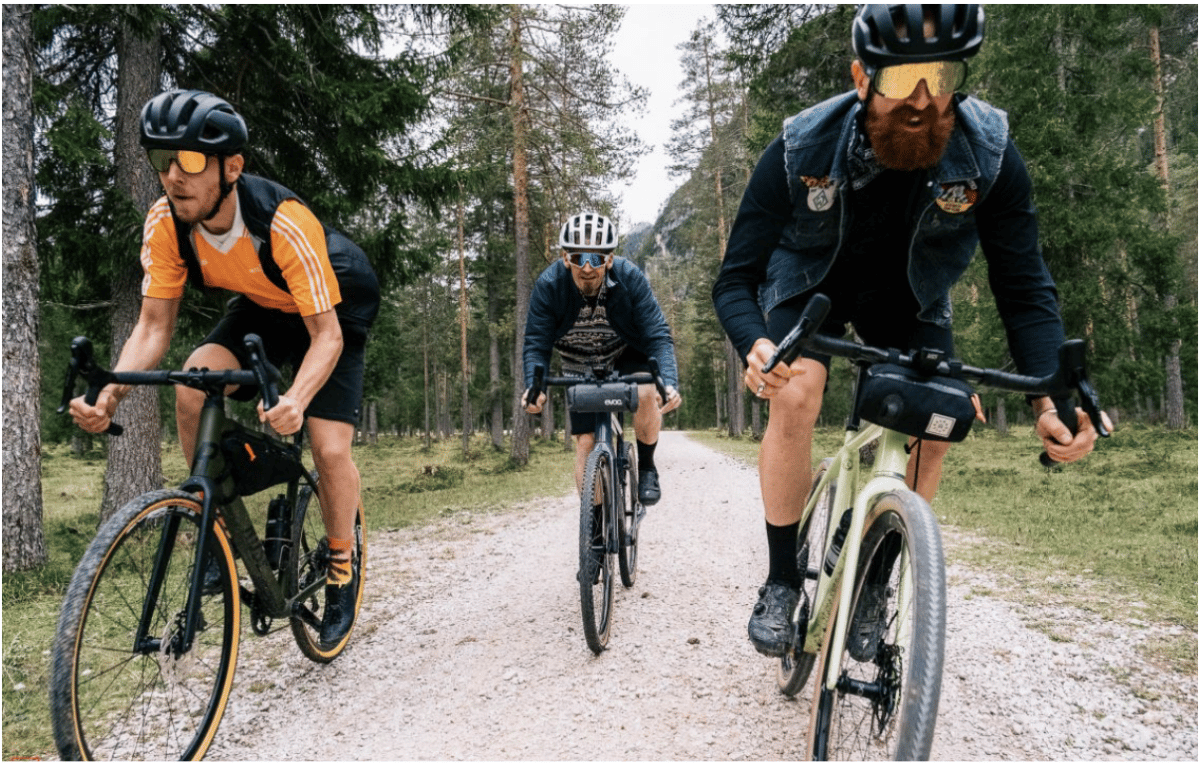
Another decision that you’ll run into and have to make in order to purchase your gravel bike is whether or not you are going to be running mechanical or hydraulic disc brakes. The two biggest things, that you’ll be able to compare and hopefully come to a conclusion about which system is better for you as a rider, is related to the power as well as the brakes ease of use.
So the first option, mechanical brakes, slow you down by using a cable system that actuates the brakes while the hydraulic disc brakes use fluid instead of these cables that you see in the mechanical ones, to initiate the braking power. In the end the hydraulic disc brakes provide an overall better stopping power and don’t require you to exert as much energy, these systems are also often easier to control and tune. Compared to the hydraulic brakes, which don’t get clogged by debris or mud out on the trails, the mechanical disc brake’s cables can often get very dirty after riding in messy conditions and could even rust over time.
So in the end the hydraulic brakes do seem to be the better way to go but that is if you are willing to spend the extra money in order to get them, a lot of the budget-friendlier models often come with the mechanical disc brake already, so it will be up to you to decide whether or not it is worth spending the extra money to get the hydraulic brakes or not.
The tires
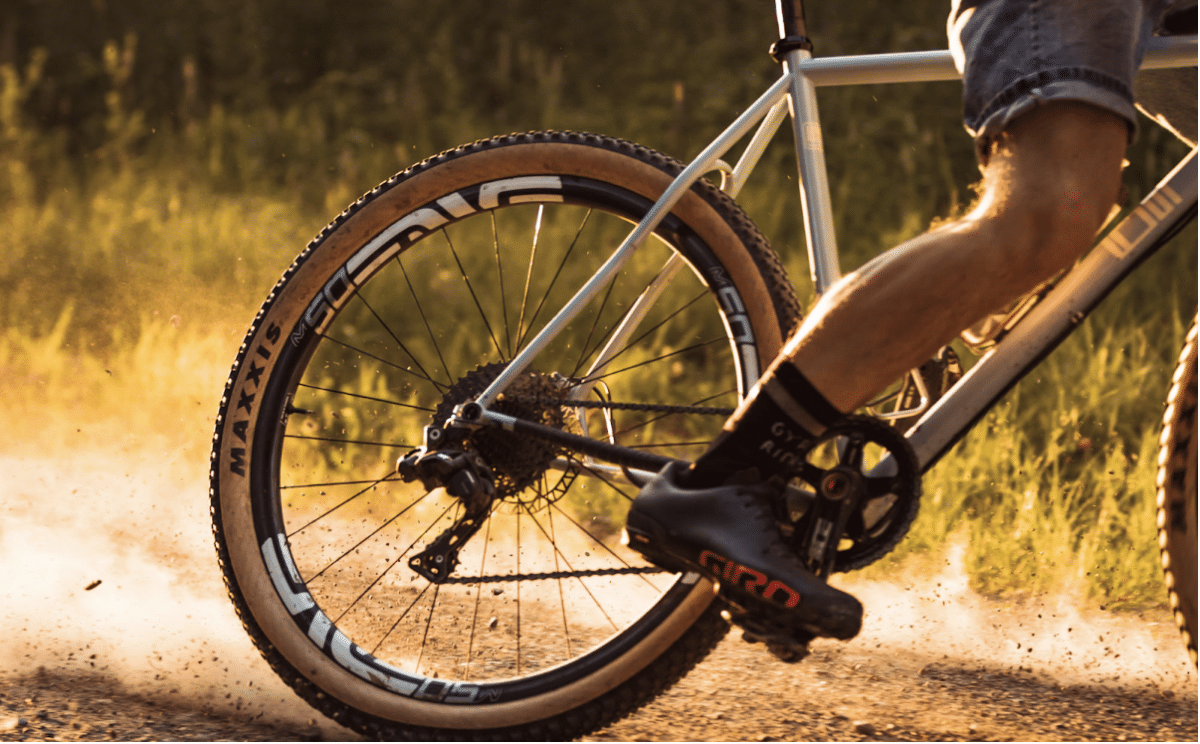
A lot of riders talk about all the cool different components that they are going to put on or are already on their bike, but some people overlook maybe one of the most important parts on your bike, the tires. The tires definitely play a huge part in your gravel riding experience as it is the only thing on your bike that is connecting you to the ground.
It is hard to give the best tire option out there as there are different sizes to different bikes, so there won’t be a one-size-fits-all option out there but there are some suggestions and recommendations that people can make when it comes to the tread pattern, size and widths of the tires that you should look at getting.
If you’re a rider who is just using their bike for commuting on pavements or roads, but do sometimes take an off road road now and again, then a tire within the 30 to 32 mm range, with a tread pattern that is more on the slick side, is a great combo for you. This size tire and pattern of tread allows you to roll faster on the paved roads, weigh less than larger setups and provide just enough comfort and traction required for your style of riding, which isn’t as demanding as someone that does a lot more off-roading in rougher terrain.
Then for riders who are looking for a little more versatility with their gravel bikes, and plan on splitting their riding time pretty evenly between the pavement and gravel, then tires from 35 to 38mm are a great choice for you. When you move into this range you’ll find a very large variety of tread patterns on these tires to choose from, which will be able to cater from anything whether you need slicks or more knobbly options. A great tire that you should definitely check out would be the Schwalbe 700c x 38mm G-One, which is a great blend of grip and speed.
Then there is the last option, for riders who will be offroading more than riding on the pavements, and for these riders it is recommended to get tires that are 40mm or even wider. These sized tires aren’t recommended for people that will be riding on the pavement or tarred roads because they roll slower and are heavier than the skinnier options, but for the off road riders this will definitely be a fair tradeoff for the comfort and traction that these tires offer instead.
Two great tire manufacturers that you should check out if you are in the market for new tires are WTB and Donnelly. Both of these brands have a lot of different tires for you to choose from, ranging from the skinniest and smoothest tires all the way up to the more aggressive gravel options, so whatever your needs are they\ll have you covered. Another thing to remember when you are buying tires is that you leave at least 3 to 4 mm of clearance so that there is space for mud and debris between your tires and the frame of your bike.
Getting the right air pressure
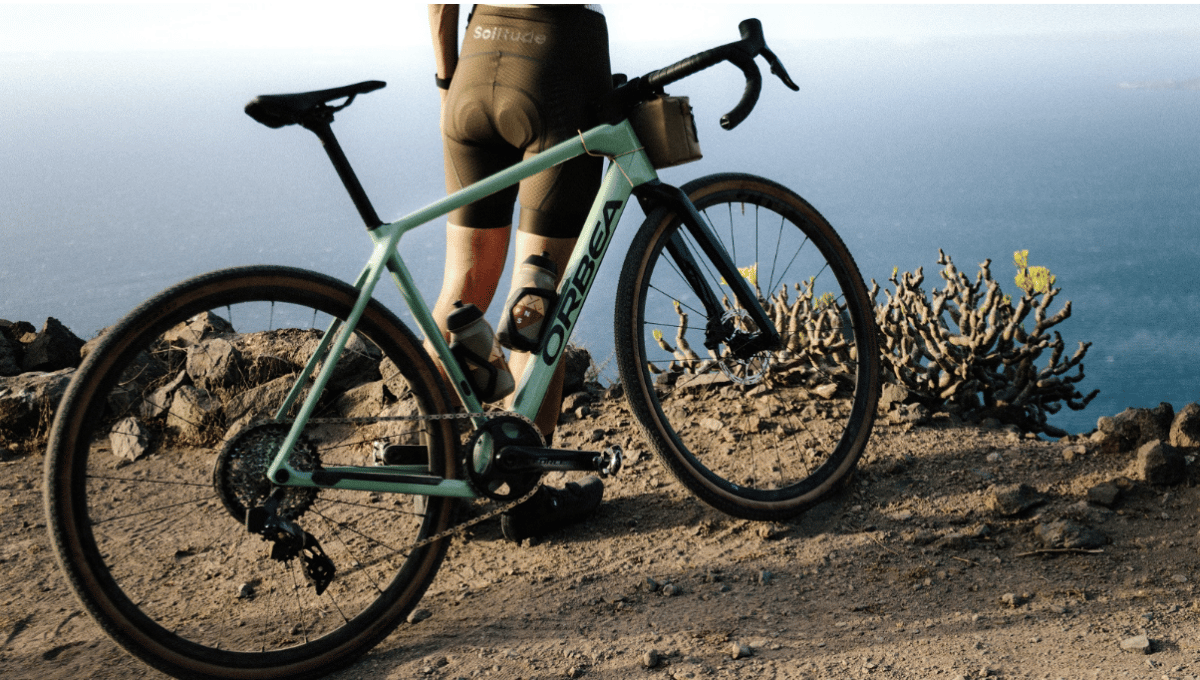
One thing that a lot of new riders forget to do or don’t do at all is adjust their tire pressure properly, you are able to measure your tire pressure in PSI,pounds per square inch. If your PSU is too high then you’ll notice that you’ll start bouncing around off of every bump on the roads. Then on the other hand if you are running your tire pressure too low then you’ll lose a lot of speed and could even result in your getting a flat since your tires will be bottoming out with every rock that you hit.
You will have to try and figure out what tire pressure, in between these two extremes, will be able to best suit you and your riding style because there is no exact number you can set your tires at for them to run perfectly for everyone. While making this decision you’ll have to take your weight, the tire width, the surface type you’ll be riding on, and your style of riding into consideration.
Although there isn’t a magical number that you will be able to set your PSI to and it will be perfect there are a few tips and a lot of advice that you can follow in order to find the perfect PSI for you personally. The first thing you will need to do is fill up your tires with air to the maximum pressure, this max PSI can be found on the sidewall. Then once you’ve done this you should take a small pencil sized object and place it on your road or a large flat surface. Then get onto your bike and ride over this object at a normal pace, around 10 kmph. At first you will more than likely be able to feel the object that you are riding over, so repeat this process again until you can’t, but each time lower the pressure by 3 or 5 PSI. Then once you’ve figured out what this PSI is, then you can take it out on a proper bike ride and see how it feels.
Once you’re out and about you can be extra mindful of how your tires feel and if you want to make any adjustments to them once you get back, this isn’t just advice for those with new bikes but should be taken into consideration each time you are out riding. The more experienced riders out there may think that this method is pretty weird but it is a simple way for a beginner rider to understand how the PSI in their bikes tires work, in order to learn how and why they’d need to adjust them if they feel uncomfortable with it on a ride. Another tip to remember is that you should try to run 3 or up to 8 PSI less in your front tire than your rear tire because most of your weight will be on your rear tire anyways.
Suspension
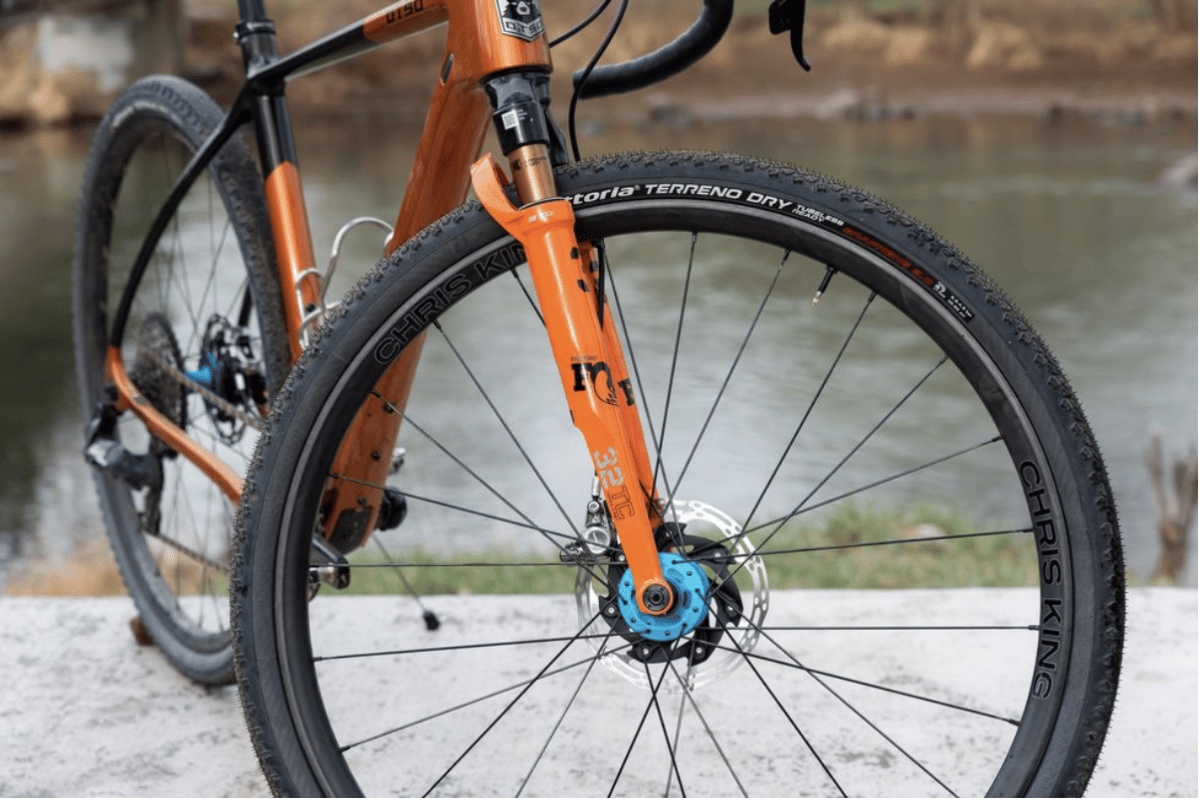
When it comes to gravel bikes, the suspension on them isn’t really a common thing so most of the time you won’t even need to check it out, but it is important for those who are looking for an overall smoother and more comfortable ride. Although these bikes don’t have the same suspension technology as your traditional mountain bikes out now on the market, models like the Trej Checkpoint SL 6, Moot Routt, and Specialized Diverge Sport all come with at least some sort of dampers or suspension-like technology to try remove the impact that bumps and rocks will have on your bike out while riding. The Trek Checkpoint SL 6 does a great job at this as they use technology called the Trek IsoSpeed, which makes your rides a lot more comfortable by decoupling the top tube and the seat tube from each other.
Then you have other suspension options like the one seen in the Specialized Diverge Sport bike, which has 20mm of suspension travel in the front. Then lastly there is the Cannondale Kingpin, which has about 30 mm of rear suspension travel, thanks to its thru-axle pivot that connects the seat stay to the seat tube. As you’d expect with these models, the price of the gravel bike most definitely do go up with all of this added technology, Cannondales Topstone Lefty 3 will put you back $4,250 because of its technology. Investing in a more expensive bike, that has this added comfort, can definitely be worth it for the riders who will be travelling at pretty high speeds on the rougher terrain.
Weight
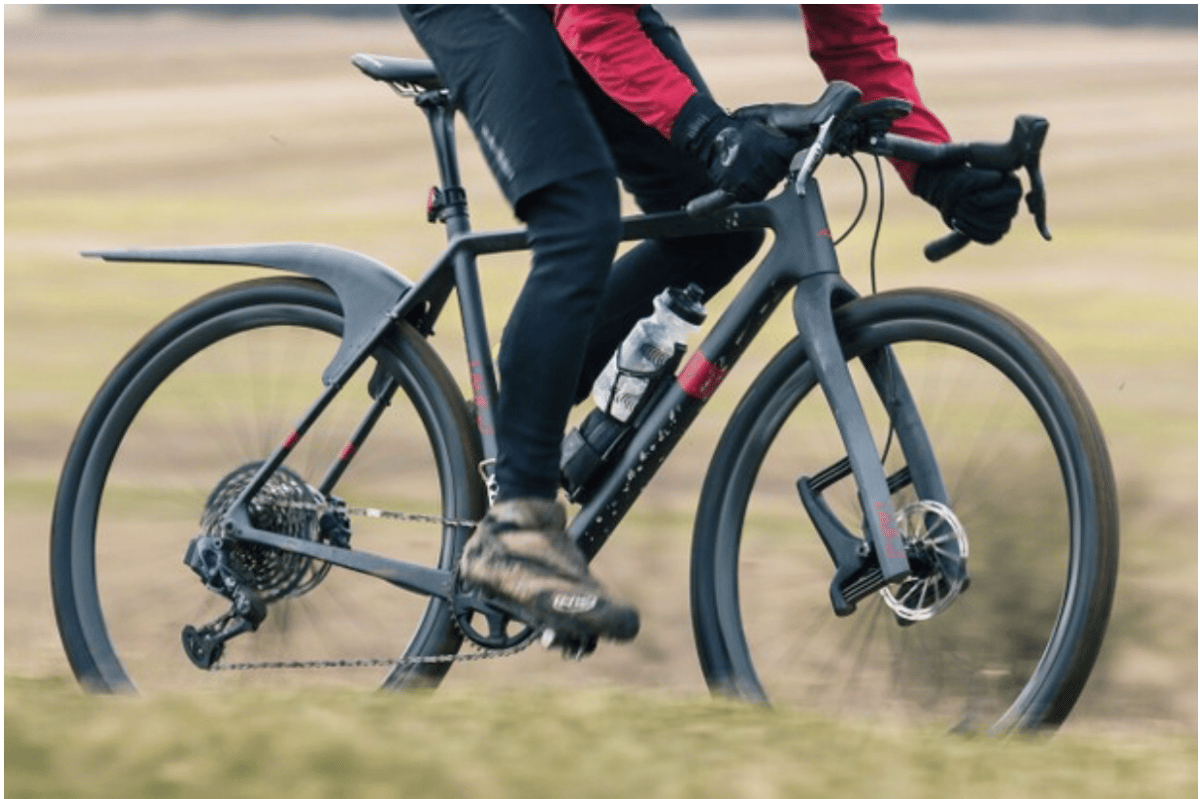
Almost every rider will know that the lighter your bike is, the more responsive your bike will be, compared to a heavier bike option. The lighter your bike is, the faster you will get up any uphills with ease, you’ll also be able to cover a lot more flat ground faster with less effort, making these bikes the ultimate bikes for commuters. Even if you look away from just the performance benefits of having a lighter bike you will also realise that your everyday life will be made easier with a lighter bike, especially having to mount your bikes onto your bike rack.
A simple way to figure out whether or not a bike is light is if it is expensive or not because more often than not the lightest bikes will also be the most expensive. An example of this would be the Co-op Cycles ADV 2.2 which weighs in at 23.5 pounds and only costs $1,599 compared to Santa Cruz’s Carbon Stigmata Force 2X, which only weighs in at 18 pounds and weighs $5,849 instead. A sweet spot, in terms of budget, for most riders would be bikes that sit in the 20 to 23 pounds range because here the price normally fluctuates at around $2,000. Then again if you are a rider who is planning on racing and wants as much weight shaved off of their build as possible then it will definitely be worth it to spend the extra cash.
Tubed or Tubeless
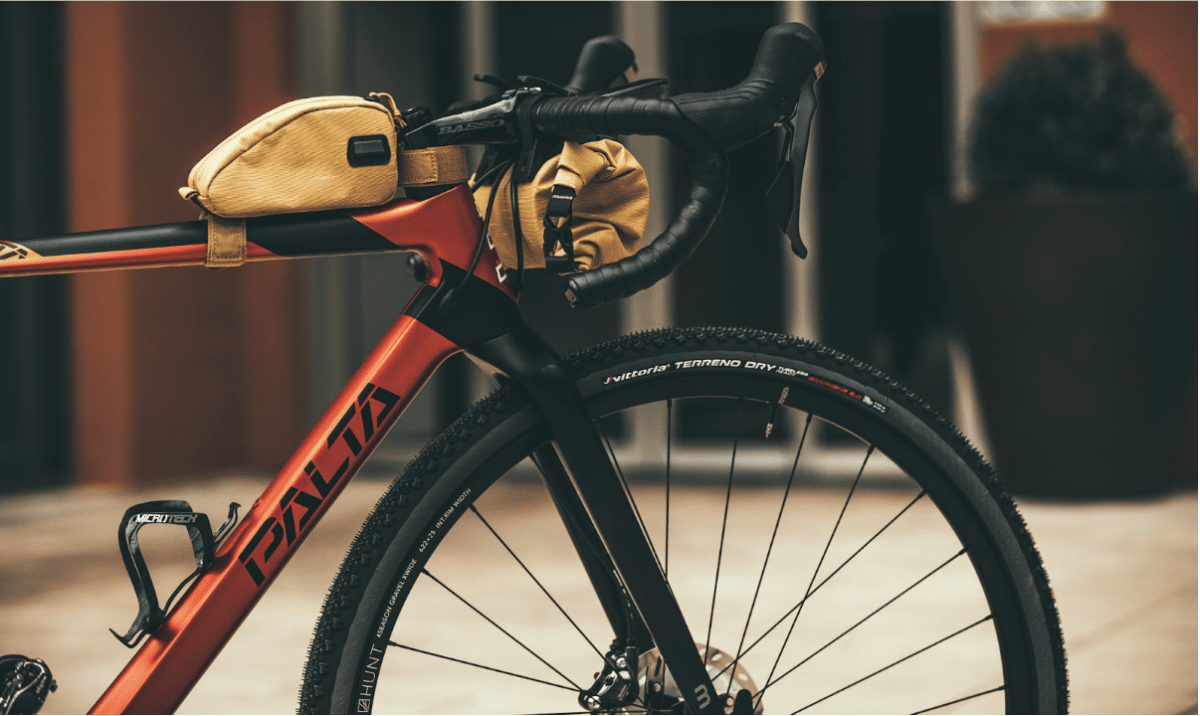
One upgrade that isn’t too expensive, compared to others, is to upgrade your tires from tubed to tubeless. This is thought of as an amazing upgrade that everyone should do as you get great benefits from doing so, such as the ability to run lower tire pressures, so that you are able to absorb impacts better without risking getting a pinch flat. Tubeless is also a little more beneficial for those that are going to be doing off-road biking as it increases your contact patch with the ground. Then for those looking to make their bike setups as efficient as possible, you’ll be happy to hear that if you remove your tubes you’ll also drop the rotational weight, making your pedal power a lot more efficient.
However, even though this upgrade may be a little less costly than some others, it is quite challenging to convert your bike to tubeless if it is your first time. Even though the installation process has gotten much easier over the years, thanks to improvements in technology, there are still tire-rim combinations out there that just don’t seem to want to inflate. There is also a bit of maintenance that you will have to do if you are running a tubeless setup, and that would be replacing the sealant a couple of times every year. You will have to do this because the sealant tends to become dry and thus lose effectiveness to seal any small holes that you may get in your tire.
Then you’ll also have to be sure that you aren’t going to go back to having a tube in your tire because if you do so it will be an extremely messy process. If it is going to be your first time converting your setup to tubeless and don’t feel comfortable with doing so then you always have the option to just leave it to your local bike shop to do for you.
Final Thoughts
So there is the ultimate guide for those looking to purchase their first or a new gravel bike. The most important thing to remember when looking for your new bike is that you know your riding style and how you’ll be using your bike because the best bike for you will be different to the best bike for someone else.

